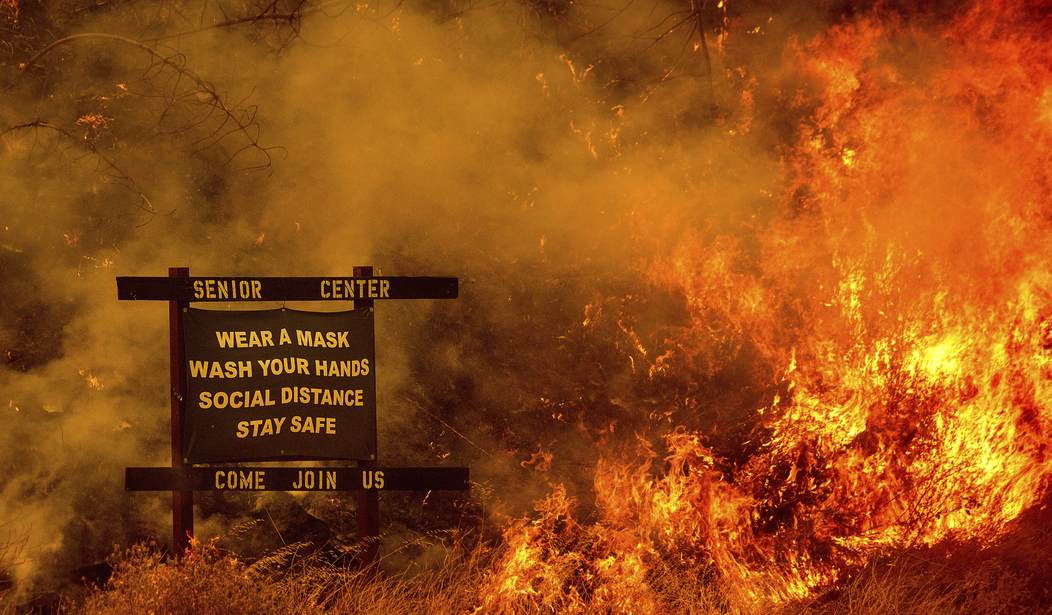2023 was a warm year. But then, we've had warm years before. In my northeastern Iowa youth, I remember July days when it was so hot, so humid, and so still that you could hear the corn growing. We didn't think anything of it back in those days. Summers were hot, and that was all there was to it; besides, back then, some climate talkers were predicting another Ice Age could send mile-thick glaciers hurtling down on us (on a geologic time scale, anyway) so we weren't really worrying about warming.
Oh, how times have changed. Now, climate scolds yap at us daily about our carbon footprints and point to 2023's being a warm year as impending climate doom. There's just one problem: 2023 was a warm year due to largely natural events.
Global-mean surface temperature rapidly increased 0.29 ± 0.04 K from 2022 to 2023. Such a large interannual global warming spike is not unprecedented in the observational record, with a previous instance occurring in 1976–1977. However, why such large global warming spikes occur is unknown, and the rapid global warming of 2023 has led to concerns that it could have been externally driven. Here we show that climate models that are subject only to internal variability can generate such spikes, but they are an uncommon occurrence (p = 1.6 % ± 0.1 %). However, when a prolonged La Niña immediately precedes an El Niño in the simulations, as occurred in nature in 1976–1977 and 2022–2023, such spikes become much more common (p = 10.3 % ± 0.4 %). Furthermore, we find that nearly all simulated spikes (p = 88.5 % ± 0.3 %) are associated with El Niño occurring that year. Thus, our results underscore the importance of the El Niño–Southern Oscillation in driving the occurrence of global warming spikes such as the one in 2023, without needing to invoke anthropogenic forcing, such as changes in atmospheric concentrations of greenhouse gases or aerosols, as an explanation.
That's a lot of turgid prose there, so I'll sum up: 2023's warming influence was largely due to an El Niño and was well within recent historical norms. But there's an interesting side note to this work on El Niño, and it's one I've not come across before, although it makes sense. Specifically, some warming may be caused by our air being cleaner than it was; particulates in the air from air pollution were, in effect, shading the earth's surface and blocking some percentage of sunlight. If you are, like me, old enough to remember what the air in our cities was like in, say, the late '60s, that will come as little surprise. It's not estimated to be a huge influence — but it's there.
Meanwhile, several studies have found that cleaner, clearer air due to falling pollution from China and lower sulfur marine fuels made only a small contribution to last year’s temperatures. One study, submitted to Atmospheric Chemistry and Physics, found that declining pollution could raise global temperatures by 0.03°C over the next 20 years, with the strongest effect not occurring until later this decade. It’s not nothing, says study co-author Duncan Watson-Parris, an atmospheric physicist at Scripps, but far too little to explain last year. Taken together, says Mika Rantanen, a climate scientist at the Finnish Meteorological Institute, the results are “a good reminder that it was indeed El Niño that was the major player.”
See Related: Green Activist Plan: Reduce Emissions by Punishing Travelers With Huge New Taxes
The climate remains as it is, as I've been saying for years: a massive, chaotic system that we'll probably never be able to fully understand. The studies cited here, like many climate studies, can only look at a relatively small portion of the overall system, in this case, El Niño and its effects. So, yes, 2023 was a warm year. El Niño has a lot to do with it — and El Niño in 2023 was, as we have seen, in line with historical norms for that event. 2025 may well be a warm year, too. We have had warm years ever since the last Ice Age, and we'll have warm years until the next Ice Age.
Do humans have an impact on climate? Sure. Everything does. Lighting a match has some impact, as does a new coal-fired power plant. But the more one looks into the research, the more one looks into the evidence, the more we look at the methods used to gain that data, the more we see that none of these arguments, none of these studies, none of the data justify what people like, say, Kamala Harris's Climate Engagement Director Camila Thorndike want to do to degrade or eliminate our modern technological lifestyle. None of the data justifies making energy more expensive. None of the data justify covering thousands of square miles of open ground, including vital wildlife habitat, with windmills and solar panels.














